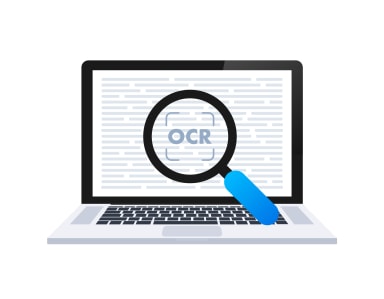How do you do payroll when you hire employees? Here are facts to help you understand your responsibilities and easily manage your small business payroll and payroll taxes.
Learning to do payroll can seem like an overwhelming task when you first hire employees. Among the things you’ll need to do to manage your small business payroll are these:
- Get an EIN and register as an employer
- Get W-4 employment forms from employees
- Record the time hourly employees work
- Calculate gross pay
- Calculate and withhold income taxes
- Calculate and withhold half of their Social Security and Medicare taxes (FICA). (Your company pays the other half of employees’ FICA taxes.)
- Calculate and pay unemployment taxes
- Make tax deposits on time and file quarterly and yearly payroll tax reports with the government
- Prepare and issue year-end W-2 wage and tax statements
- Save payroll records for at least four years
While it’s possible to do employee payroll yourself, managing payroll for a small business is much easier and less stressful if you use a full-service payroll service provider. The service will calculate the appropriate withholdings, pay the employees, make your tax deposits on time, and file tax reports for you. Making the tax deposits on time is important because the company will be fined if it’s even one day late making payroll deposits.
However, even if you plan to use a payroll service provider, you need to know and comply with certain rules and regulations before you can process payroll. Here are facts to help.
What is payroll?
The term “payroll” refers to paying employees a salary for the work they do for your company. The term is also used to refer to the list of a company’s employees, and, in accounting, to the money your company spends to pay employees and employment taxes.
Only employees receive salaries and have taxes withheld
An individual has to be an employee to receive a salary, have payroll taxes withheld, and have half of their FICA paid by the business. Doing work for or in a business does not automatically make an individual an employee. Independent contractors and some business owners are not employees in the eyes of the IRS.
If you’re a sole proprietor or a member of an LLC operating as a sole proprietorship or general partnership, you’re not considered an employee by the IRS. You don’t get paid a salary or get a paycheck.
Instead, you pay yourself by taking a draw against profits. The business doesn’t pay or withhold Social Security or Medicare or other employment taxes on the draw. Instead, you are personally responsible for paying self-employment taxes to cover the Social Security and Medicare taxes due on your earnings.
Here’s how to pay yourself as a sole proprietor.
Similarly, independent contractors and freelancers aren’t considered employees. They aren’t part of your small business payroll and don’t get a paycheck. Your business doesn’t withhold any money from their earnings and doesn’t have to pay half of their Social Security and Medicare payments on their behalf. The contractors and freelancers are responsible for paying all of their Social Security and Medicare themselves through the Self-Employment tax.
One caveat: misclassifying an employee as an independent contractor to reduce taxes and paperwork can cause your company to incur steep IRS fines and penalties.
Payroll Processing Requirements
You need to take several steps before you hire employees and put them on payroll.
Get an EIN
Before you hire your first employee, you’ll have to get an Employer Identification Number (EIN) from the IRS. You also need to register with your state department of labor and determine if they will require you to get a state EIN in addition to the federal EIN. This list of state government websites can help you find the information for your state.
.
Get required insurance
You’ll need to purchase unemployment insurance to cover your employees, and in most states you’ll also need to get workers’ compensation insurance. In some states you may also be required to have short-term disability insurance and/or paid family leave insurance. Visit your state department of labor website to determine which insurance coverages you need. Your accountant should be able to refer you to companies that provide the necessary insurance.
Establish your payroll schedule
When you have employees, you have to pay them on a regularly scheduled basis (i.e., cycle). The payroll cycle is the number of days between paychecks. Common pay cycles are weekly, bi-weekly, and once a month.
Get payroll forms completed
You’ll need to have new employees complete two payroll forms: an I-9, which verifies their eligibility to work in the United States, and a W-4 form, which is used to determine the amount of taxes to be withheld. The I-9 only needs to be completed once. Employees’ W-4 information should be updated yearly to reflect changes in marital status and dependents.
Learn more about how the I-9 form and W-4 form differ and why you need both
Classify employees’ jobs as hourly or salaried
Before you add an employee to your payroll, determine whether their position makes them a salaried employee (exempt from overtime laws), or an hourly employee (non-exempt).
Salaried employees are paid a set salary. They don’t receive overtime if they work more than 40 hours a week.
Hourly employees (non-exempt) must be paid overtime when they work more than 40 hours a week.
Misclassifying an employee as exempt when they should be paid overtime can result in steep fines. Read more about non-exempt vs. exempt employees.
Report new hires
Whenever you hire an employee or rehire an employee, you have to report the new hire to your state. You’ll need to provide the state with the employee’s name, address, Social Security number, and the date they started working. You’ll also need to provide your business name, address, and EIN.
Choose how you’ll record work hours
If any of the employees on your payroll will be hourly employees, you’ll need to decide how you record and track the hours they work. Common methods are using a time clock, time tracking software, or paper and pencil.
Whichever method you choose, you’ll need to tally up hourly work hours before you run payroll each pay cycle.
Run the payroll
Running payroll (also called processing payroll) means determining each employee’s gross earnings and withholdings for the pay period and distributing their pay on time.
To run payroll, you’ll need to consider:
- each employee’s withholding status and number of dependents (listed on their W-4)
- each employee’s pay rate
- whether the employee is hourly or salaried
- the number of hours worked (for hourly employees)
- overtime hours hourly employees worked
- tips received (if you have tipped employees)
- any additional deductions for benefits or 401K plans
Once you calculate the withholdings, pay your employees on the scheduled pay date. In most states, you also must provide employees with a pay stub showing their gross earnings, withholdings, and take-home pay. Keep detailed records of each payroll run for tax purposes.
Running payroll is only part of your duties as an employer. In addition, you have to deposit the tax withholdings, and file other government reports.
Make regularly scheduled payroll tax deposits
You have to deposit payroll taxes regularly using EFT (electronic funds transfer) on a schedule dictated by the IRS. Although there are exceptions, most businesses have to follow either a monthly depositor schedule or semimonthly depositor schedule.
Which deposit schedule you’re required to follow depends on the total taxes you reported on Form 941 during a 12-month look-back period. If that amount was less than $50,000, you’re a monthly schedule depositor. If the taxes were over $50,000 you’re a semiweekly schedule depositor.
What can be confusing is that the terms monthly depositor and semiweekly depositor don’t refer to how often you pay employees or how frequently you have to make payroll deposits.
Instead, according to the IRS, “the terms identify which set of deposit rules you must follow when an employment tax liability arises. Those deposit rules are based on the dates wages are paid, not on when employment tax liabilities are accrued.”
If you’re a monthly schedule depositor, you have to deposit the withholdings and the employer portion of Social Security and Medicare taxes on or before the 15th of the month following each month you’ve paid employees.
If you’re a semimonthly schedule depositor, you have to make tax deposits within three business days after the date employees were paid. Thus, if you’re a semimonthly depositor and only pay your employees once a month, you only make one tax deposit a month, but that deposit has to be made on the third business day after you paid employees (instead of by the 15th of the month following the pay date). If you’re a semimonthly depositor and pay your employees weekly, you’d need to make weekly deposits, each on the third business day after salaries were paid.
The rules are complex, with differences for businesses with very large monthly tax deposit liabilities, and some accommodations for businesses with very small payrolls. The IRS Employer’s Tax Guide (Publication 15) details all the rules.
If you’re using a full-service payroll company to process payroll, the payroll company will automatically deduct the withholdings and the employer share of Social Security and Medicare from your bank account and make the tax deposits and filings for you.
If you’re doing your own payroll or using a low-cost (self-service) payroll solution that doesn’t make deposits for you, be sure to set aside the money to make those tax deposits on time. You’ll be fined if you’re even one day late.
Pay unemployment taxes
In addition to payroll taxes, you have to pay federal unemployment tax (FUTA) and state unemployment tax (SUTA) for your employees. These taxes provide the money that is used to pay unemployment benefits to workers who have lost employment through no fault of their own. Unemployment taxes are the employer’s responsibility, so they aren’t withheld from employees’ paychecks.
What earnings are subject to FUTA taxes?
In general, a business has to pay FUTA tax on wages of employees if it meets one of these two conditions:
- You paid wages of $1,500 or more to employees in any calendar quarter during 2020 or 2021, or
- You had one or more employees for at least some part of a day in any 20 or more different weeks in 2020 or 20 or more different weeks in 2021. Count all full-time, part-time, and temporary employees.
FUTA only gets paid on employee wages. Thus, you don’t have to pay FUTA on the earnings of freelancers who do work for you and you don’t pay FUTA on self-employment earnings.
LLCs don’t pay FUTA on the passthrough earnings of their members. However, if an LLC has elected to be taxed as a C or S corporation it does have to pay FUTA on the salary paid to members who work in the business.
Partnerships don’t pay FUTA on partner earnings.
FUTA rules for agricultural workers and household employees are different. See the IRS website for more information.
FUTA Tax Rate
The FUTA tax rate is 6% applied to the first $7,000 in wages paid to each employee. This is called the federal wage base. Wages an employee earns above $7,000 aren’t subject to federal unemployment tax. (The wage base for your state unemployment taxes may be different from the FUTA base.)
If you paid wages subject to state unemployment tax, you may receive a credit of up to 5.4% of FUTA taxable wages when you file your Form 940 Employer’s Annual Federal Unemployment (FUTA) Tax Return.
How do you file and pay FUTA?
You have to file the Form 940 FUTA unemployment tax return annually. However, depending on the size of your payroll, you may have to deposit your FUTA tax before you file your return. If your FUTA tax is more than $500 for the calendar year, you may have to make one or more quarterly tax payments. See Form 940 instructions for details.
State Unemployment Taxes Rules
State unemployment tax (SUTA) rules and procedures vary. For information on the unemployment tax regulations for your state, contact your state department of labor. You can also find state unemployment insurance contact information on the U.S. Department of Labor website.
File and distribute W-2 forms for employees
Form W-2 is a wage and tax statement that shows the employees earnings and withholdings for the year. It consists of several parts (Copies) that employees need to submit to federal, state, and local authorities with their personal income tax returns.
You have to complete and deliver a W-2 to each employee by January 31. You also have to send the Social Security Administration copies of those W-2s along with a Form W-3, Transmittal of Wage and Tax Statements. See the IRS website for more information about filing Forms W-2 and W-3.
File and distribute 1099s
The 1099 is a form used to report payments to independent contractors. Although freelancers and other contractors aren’t employees and technically aren’t part of your payroll, you’re required to report their earnings to the IRS and provide each contractor with a copy of that report. Read the difference between a W-2 and 1099 tax forms.
Benefits of Using a Payroll Company
Although you’ll pay a fee, the easiest way to manage and run payroll and ensure withholdings are correct and payroll deposits are made on time is to use a well-established, full-service payroll company. Most will also file quarterly and annual payroll reports on your behalf. Most also have a way for your accountant to log in to gather the information they need to do the accounting chores they are responsible for.
An added benefit of using a full-service payroll company is that it stores and allows you to produce records you may need in the future. For instance, you should be able to retrieve a record of employee wages and taxes paid and the dates deposits were made as well as employment tax filings the service made on your company’s behalf.
It’s useful for employees to be able to log into a payroll service to see their own information and retrieve their W-2 statements at the end of the year, as well.
Additionally, the payroll service provider should make it easy to pull up special reports you may need, such as the payroll records small businesses need to submit to the U.S. Small Business Administration (SBA) for the Paycheck Protection Program and Economic Injury Disaster (EIDL) grants and loans.
Having such payroll records stored and quickly accessible is a huge benefit and time-saver when you need to retrieve them.
How to Choose a Payroll Company
There are several major payroll services providers that do payroll processing for small companies. To choose one, ask other small businesses and your accountant which they recommend. Go to the websites of the companies that are recommended to you and compare prices and services. Look at reviews online to find out what others think about the companies, but pay attention to whether or not the reviews are written by actual users of the service.
Among the factors to consider and compare when choosing a payroll company are:
- Cost (Will you pay a monthly fee, or each time you run a payroll, for instance.)
- Tax services they provide
- Reputation
- Ease of use
- Payment options (i.e., checks, direct deposit, or pay cards)
- Customer support
- Ability to run payroll over the phone (in case your Internet connection goes down)
- Integration with time clocks and your and/or your accountant’s accounting software
- Access to records for employees
- Guarantee for tax handling services
- Will they handle your unemployment insurance payments?
- Other services they offer, such as HR advice or help with employee handbooks
Under IRS regulations, the employer is ultimately responsible for depositing and paying federal tax liabilities. If a third party managing payroll processing for you takes the money for tax deposits but fails to make them, you’ll be held liable for the amount due. Thus it’s important to work with a reputable, well-established payroll processing company.
Read more about choosing a payroll service.
Once you choose a service to manage and run your employee payroll, you’ll have to allow them access to your bank account so they can deduct the money to pay your employees, pay employment taxes, and pay the payroll company’s fee.
Disclaimer: The content on this page is for informational purposes only, and does not constitute legal, tax, or accounting advice. If you have specific questions about any of these topics, seek the counsel of a licensed professional.





